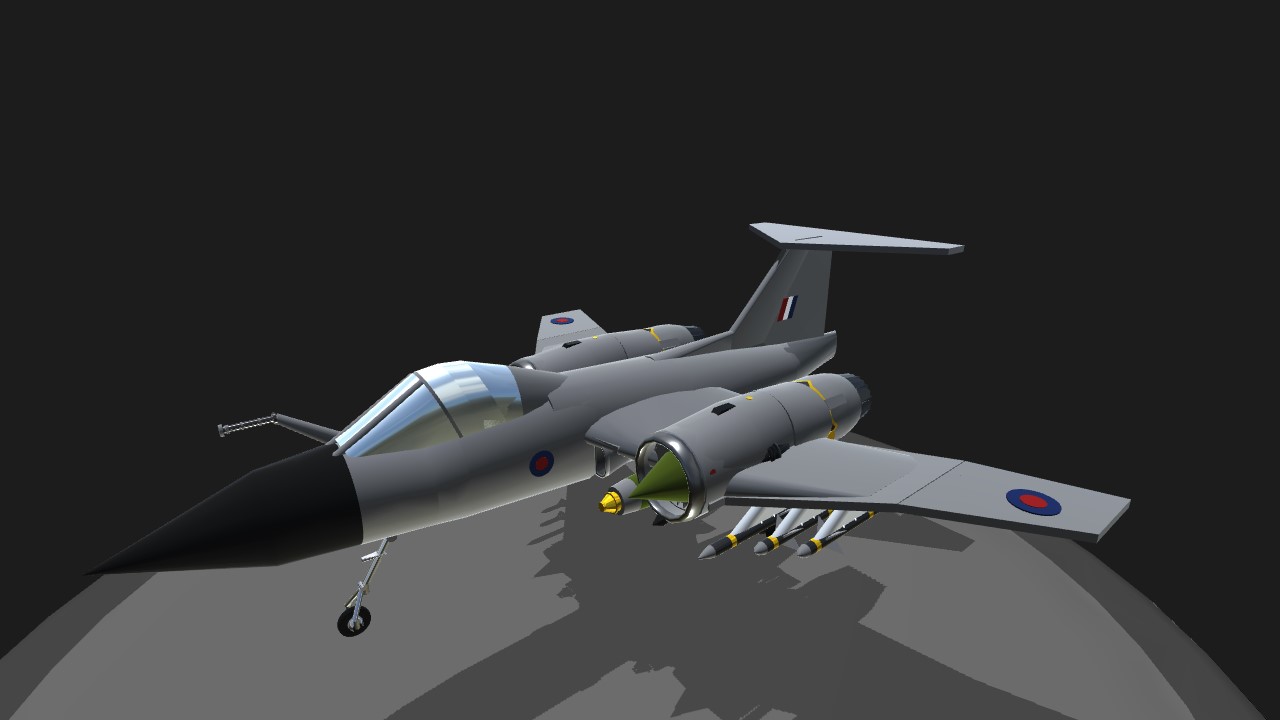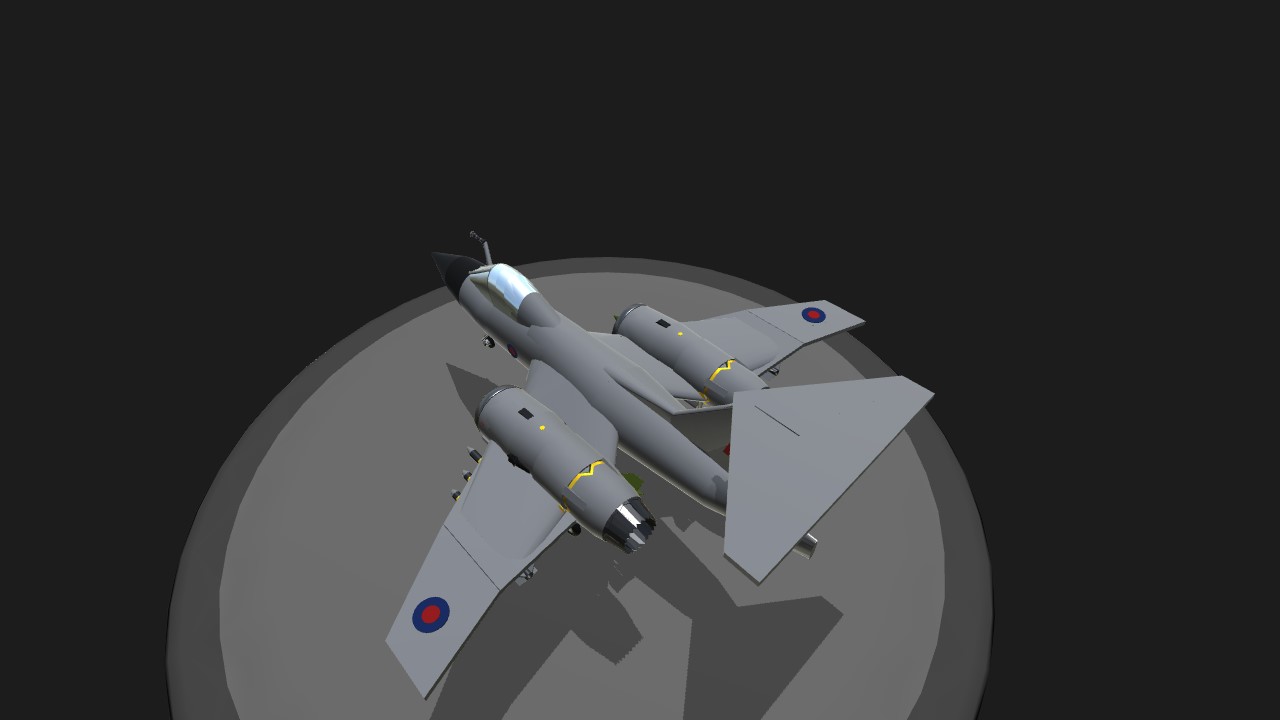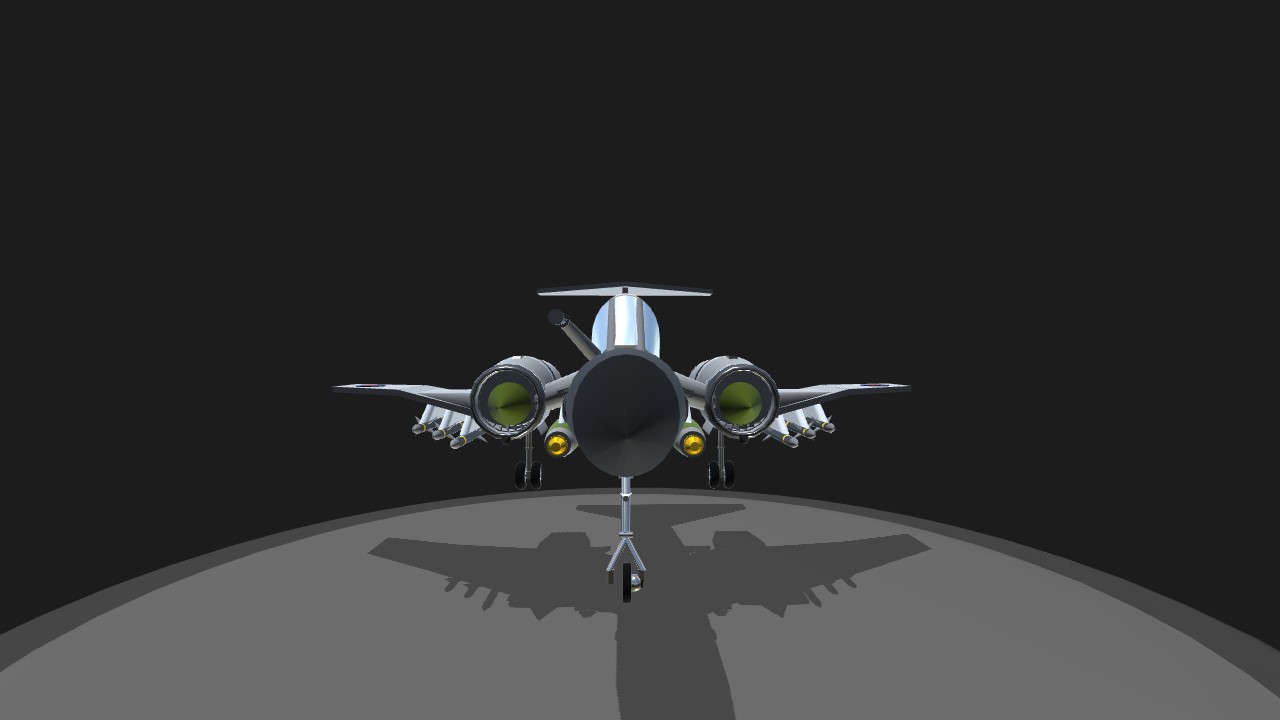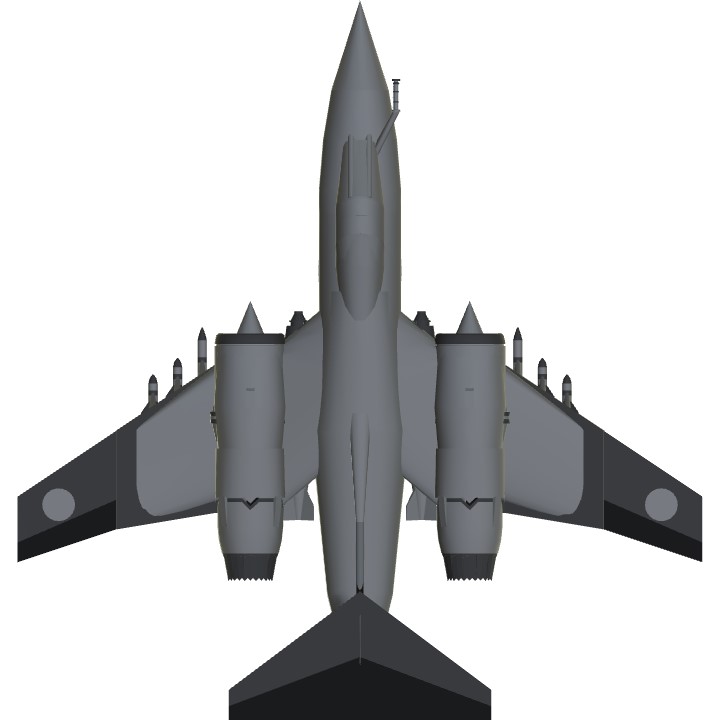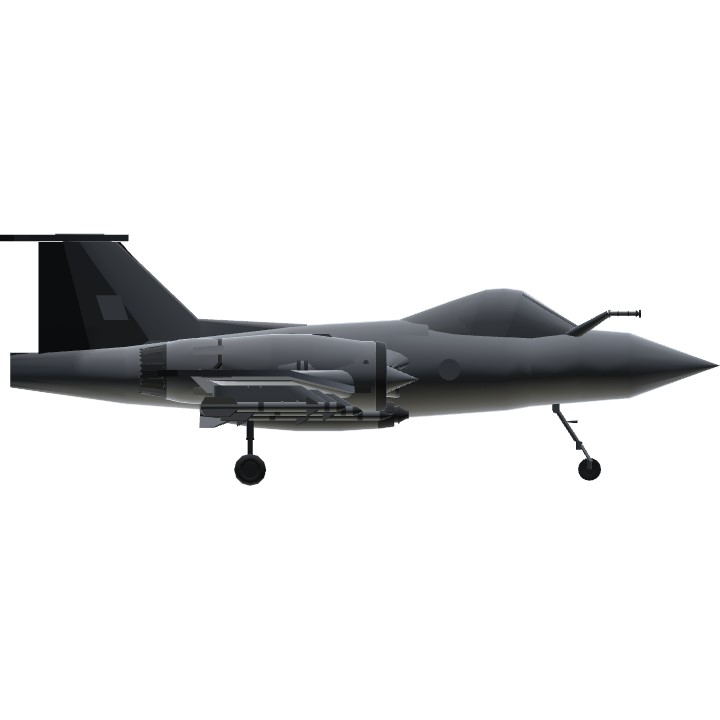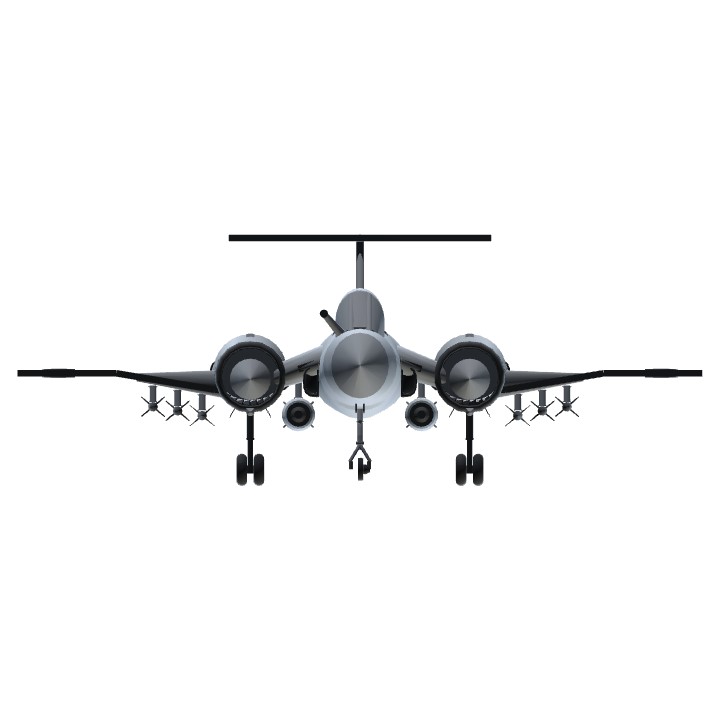This is a fictional plane!
A detailed specification was issued in June 1952 as Naval Staff Requirement NA.39, calling for a naval strike aircraft capable of flying at 600 knots (1111 km/h; 690 mph) at sea level, with a combat radius of 400 nautical miles (741 km; 460 mi) at low altitude and 800 nmi (1,482 km; 921 mi) at higher cruising altitudes.
Using experience learned during the production of the Javelin, Gloster met the specification with the Pilum. The first production Pilum model, the Pilum S.1, entered squadron service with the Fleet Air Arm in January 1963.[8] It was powered by a pair of de Havilland Gyron Junior turbojets producing 7,100 pounds-force (32 kN) of thrust.[9] This mark was somewhat underpowered and as a consequence could not take off fully laden with both fuel and armament. A temporary solution to this problem was the "buddy" system; aircraft took off with a full load of weaponry and minimal fuel and would sortie with a Supermarine Scimitar that would deliver the full load of fuel by aerial refuelling.
Specifications
General Characteristics
- Predecessor Westland Wight Mk 2 (Improved performance)
- Created On Windows
- Wingspan 34.0ft (10.4m)
- Length 36.0ft (11.0m)
- Height 12.6ft (3.8m)
- Empty Weight 25,128lbs (11,398kg)
- Loaded Weight 29,643lbs (13,446kg)
Performance
- Power/Weight Ratio 6.823
- Wing Loading 109.7lbs/ft2 (535.4kg/m2)
- Wing Area 270.3ft2 (25.1m2)
- Drag Points 6610
Parts
- Number of Parts 133
- Control Surfaces 5
- Performance Cost 677

